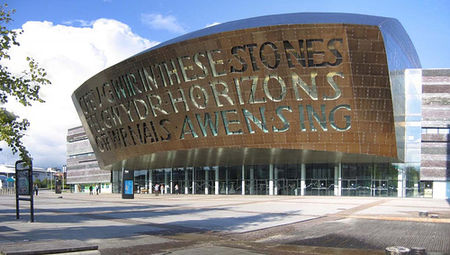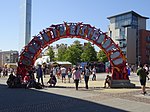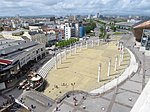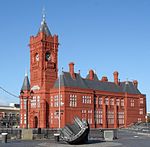Wales Millennium Centre

Wales Millennium Centre (Welsh: Canolfan Mileniwm Cymru) is an arts centre located in the Cardiff Bay area of Cardiff, Wales. The site covers a total area of 4.7 acres (1.9 ha). Phase 1 of the building was opened during the weekend of the 26–28 November 2004 and phase 2 opened on 22 January 2009 with an inaugural concert. The centre has hosted performances of opera, ballet, contemporary dance, theatre comedy, pop stars, and musicals. The Wales Millennium Centre comprises one large theatre and two smaller halls with shops, bars and restaurants. It houses the national orchestra and opera, dance, theatre and literature companies, a total of eight arts organisations in residence.The main theatre, the Donald Gordon Theatre, has 2,497 seats, the BBC Hoddinott Hall 350 and the Weston Studio Theatre 250.In 2001 Lord Rowe-Beddoe was appointed chairman of Wales Millennium Centre, a company limited by guarantee. Board members include Sir Michael Checkland.
Excerpt from the Wikipedia article Wales Millennium Centre (License: CC BY-SA 3.0, Authors, Images).Wales Millennium Centre
Bute Place, Cardiff Cardiff Bay
Geographical coordinates (GPS) Address Website External links Nearby Places Show on map
Geographical coordinates (GPS)
| Latitude | Longitude |
|---|---|
| N 51.465038888889 ° | E -3.1635333333333 ° |
Address
Wales Millennium Centre
Bute Place
CF10 5AL Cardiff, Cardiff Bay
Wales, United Kingdom
Open on Google Maps









